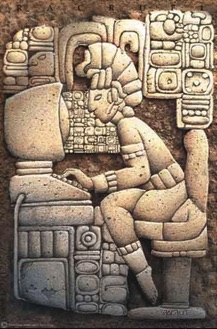MEMOS
^ MEMOS FROM JULIAN T. ^
THOUGHTS ON ART
→ There is a lot of anxiety in painting today because, unlike in the past when painting only had to compare itself to the high standards set by the great painting of Florence, Rome and Venice, painting now has a whole array of peculiar competitors whose prominence, popularity and power in the art arena have overshadowed a set of internal pictorial laws that gave figurative and illusionistic painting its potency. Without an understanding of what, historically, makes great painting we cannot hope to progress the medium alongside the innovations in technology, science and engineering. These things should be thought of as tools that can assist the transmission of the knowledge borne by painting, not as substitutes. Though more art is being made than ever before, I have a slight feeling that artistic expression, in painting, has become complacent and has been woefully diluted. I am amazed by the extent to which illusionistic, narrative and figurative syntheses are undervalued or have become outdated. Whenever I come across an isolated attempt of narrative expression, I smile to myself and feel like applauding the person who has taken on the challenge.
→ Though painting will always be in competition with a multitude of conflicting forms and aesthetic ideologies which have their own political and economic agendas, I feel confident that painting's internal standards along with the secret knowledge (experience) required to make a soulful painting are enough to safeguard the medium from external abuses.
→ Recently, we have seen a wave of painters in Germany expounding an allegorical form of painting that preserves the illusionistic and figurative integrity of the medium. Among them are Daniel Richter, Neo Rauch and Jonas Burgert. In the U.S. someone like Terry Rodgers, dare I say Jeff Koons, could also be said to be working alongside a traditional and historical format with the aim of synthesizing an image of 'our time' via appropriate subject matter. Our apprehension of these paintings is not so much literal as it is visual. We see that they have punch, we recognize the imagery, we are seduced by the colours and the application of paint – why should we try to surgically dissect aspects of painting when we see that it works best as a compound, when all possible aspects of painting are pictured in relationship to each other?
→ Great art reveals the full potential and bottomless nature of the source that connects, feeds and sustains the human species.
→ Sometimes I get the feeling that what I am looking for and trying to achieve in painting is not realistic. What I really want to see is a picture that describes the extraordinary potential of 21st century Man, without the disappearance of subjectivity. I want to see the dirty hands of an artist producing an image that renders the unprecedented amounts of historical, scientific, theological, humanitarian, philosophical, artistic, economic and sociological knowledge intelligible. In short I want to see a painting that reveals what Wisdom looks like in the 21st century. The closest I have come to such an experience was in a Royal Academy summer show, standing in front of a ginormous mountain sculpted onto a canvas by Anselm Kiefer.
→ Every time I stretch up a canvas, I want to make it bigger than the one I just finished working on. However self-destructive this may be, it is an instinct I cannot eliminate. The rational is simple: when making small works you cannot be sure that they will last, or that they will be noticed. Conversely, when making a big work you can at least ensure that it will be noticed while it lasts.
→ In marriage, in friendship and in work, death provides the backdrop against which the image of a joyful ambition can be framed. At some point in our lives, most of us will leave behind a fragment of this ambition and hope that it will be something our children and grandchildren can look up to and learn from.
→ Art, architecture, literature, science and economics are all part of the language game that constructs our material world. One language feeds and begets the other and in the process we create a kind of cultural solipsism where nonhuman domains and subjects become significant only by virtue of how our social entanglement has woven us into their linguistic constructs. This realization makes me long for an art that bridges nature with culture and language with its material referent. Such an art would have a humbling effect, similar to the effect of nature (a view of the Mont Blanc or the Mont St Victoire) in its reminder that humankind is not self-sufficient and that some human inventions would do well to gratify human needs without relinquishing their integrity to a use value.
→ The beauty of art lies in its ability to attach a meaning to life that rests outside our ordinary experience of the world. Intangible emotions such as love, pain, joy and anger all need vessels to contain and transmit them and always point to the existence of something beyond ordinary experience. We like to believe that there are things outside of experience that can impart significance to our lives and our day-to-day activities. The quest for knowledge, the search for beauty, devotion to spirituality and the need to love; these are the things we hold in high esteem and could sacrifice our life for. The rest is untranscendental detail.
© Julian Tschollar 2020

Why I do what I do?
What's the goal?
